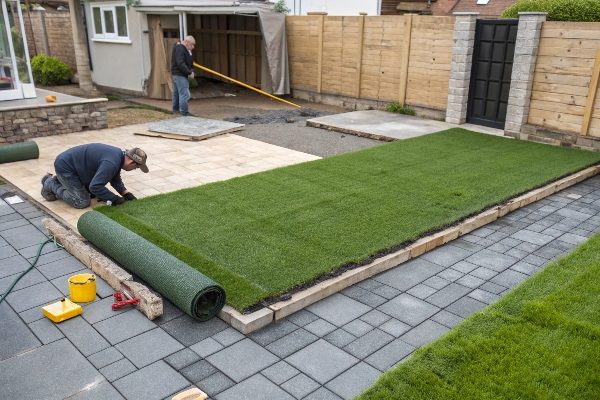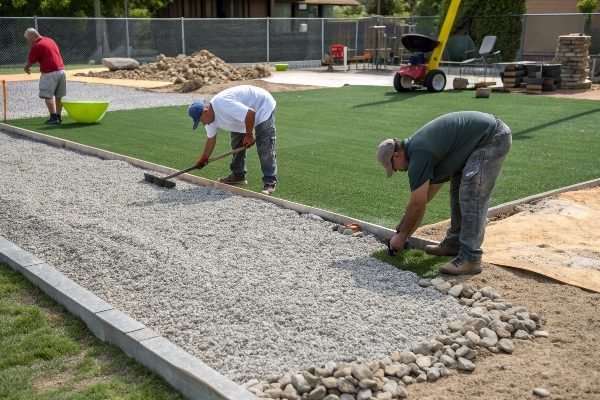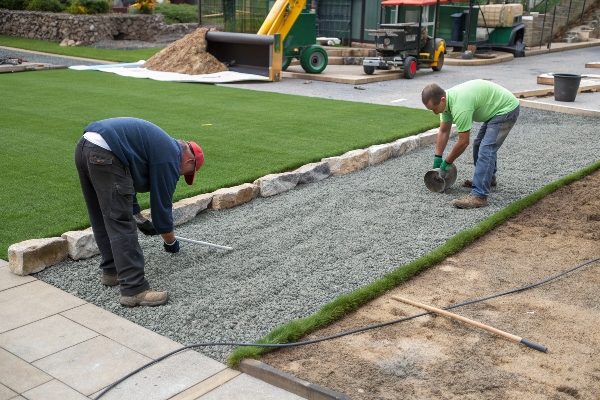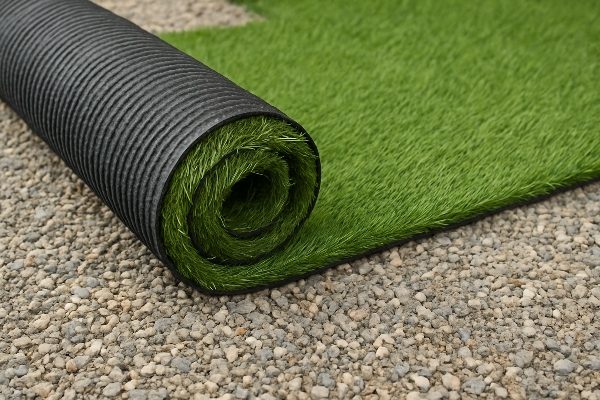I remember when I first started in this industry, a client called me in panic. His newly installed artificial grass was sinking in patches. He had skipped the base preparation to save money. That mistake cost him three times more to fix.
The suitable base for artificial grass depends on your project type and location. Most installations use a compacted crushed stone or decomposed granite base. This provides stability, drainage, and prevents the turf from shifting over time.

I have seen hundreds of installations over my 15 years in this field. The base is the foundation of everything. Without a proper base, even the best quality turf will fail. Many people focus only on the grass itself. They forget what sits underneath. But I can tell you from experience, the base determines how long your turf lasts. It affects drainage, stability, and the overall look. Let me share what I have learned about choosing the right base for your artificial grass project.
What is the best base to put under artificial grass?
Your base choice makes or breaks your installation. I learned this the hard way when I managed my first major sports field project. We used the wrong aggregate size. The field developed uneven spots within months.
Crushed stone or decomposed granite with a 3/8-inch minus size works best under artificial grass. This material compacts well, provides excellent drainage, and creates a stable surface that prevents shifting and maintains levelness.

Why crushed stone works best
The angular shape of crushed stone makes it ideal. When you compact it, the pieces lock together. This creates a solid surface. Round gravel does not lock the same way. I always recommend crushed stone to my clients.
The drainage capability matters most. Water must flow through the base quickly. If water pools under your turf, you will face problems. Mold can grow. The backing can deteriorate. The infill can wash away. Crushed stone allows water to drain freely.
Base depth requirements1
The depth of your base depends on soil type and usage. For residential lawns, I recommend 3 to 4 inches of compacted base. For sports fields, you need 6 to 8 inches. Heavy-use areas require deeper bases.
| Project Type | Base Depth | Compaction Level |
|---|---|---|
| Residential lawn | 3-4 inches | 90-95% |
| Playground | 4-6 inches | 95% |
| Sports field | 6-8 inches | 95-98% |
| Commercial area | 5-7 inches | 95-98% |
I check the soil type before deciding the depth. Clay soils hold water. They need better drainage systems. Sandy soils drain naturally. You might use less base material. But never skip the base entirely. This always leads to problems later.
What do you put underneath fake grass?
The layers under fake grass work as a system. Each layer serves a purpose. I explain this to every client because understanding the system helps them maintain their turf better.
You put several layers underneath fake grass: landscape fabric for weed prevention, a crushed stone base for stability, a layer of decomposed granite for smoothness, and finally the artificial grass itself.

The complete layer system
The bottom layer starts with weed barrier fabric. This blocks weeds from growing through your turf. I have seen installations without this fabric. Weeds push through the turf within a year. The maintenance cost increases dramatically.
Next comes your main base layer. This is the crushed stone I mentioned earlier. You spread it evenly across the area. Then you compact it in two-inch layers. Never try to compact the full depth at once. This creates soft spots.
Detailed layer breakdown
| Layer | Material | Thickness | Purpose |
|---|---|---|---|
| 1 (bottom) | Landscape fabric | Single layer | Weed prevention |
| 2 | Crushed stone | 2-6 inches | Main stability and drainage |
| 3 | Decomposed granite | 1-2 inches | Smooth surface |
| 4 (top) | Artificial grass | Varies | Playing surface |
The top of your base needs a smooth finish layer. I use decomposed granite or fine crushed stone. This fills small gaps. It creates a perfectly level surface. Your turf will lay flat without bumps or depressions. This layer also helps with final drainage. Water flows through it quickly.
Some installers skip the fabric layer. They claim it is not necessary. I disagree strongly. Every successful long-term installation I have managed included proper weed barrier fabric. The small cost now saves you money later.
Can you lay artificial grass on gravel?
This question comes up often in my consultations. People want to know if they can use existing gravel. The answer is more complex than yes or no.
You can lay artificial grass on gravel if the gravel is the right type and properly prepared. The gravel must be crushed angular stone, not round pea gravel, and it must be compacted to create a stable base.

The right gravel matters
Not all gravel works for artificial grass. Pea gravel has smooth, round stones. These stones shift easily. They do not compact well. Your turf will move around. I always advise against using pea gravel as a base.
Angular crushed gravel works perfectly. The sharp edges lock together when compacted. This creates the stable surface you need. If you already have this type of gravel, you can use it. Just ensure it is clean and properly compacted.
Preparation requirements
| Gravel Type | Suitable? | Preparation Needed |
|---|---|---|
| Pea gravel | No | Replace with crushed stone |
| River rock | No | Replace with crushed stone |
| Crushed stone | Yes | Compact and level |
| Decomposed granite | Yes | Compact and level |
| Crushed limestone | Yes | Compact and level |
The existing gravel needs proper preparation. First, remove all organic matter. Leaves, sticks, and debris must go. Next, level the surface carefully. Use a screed board or similar tool. Then compact the gravel thoroughly. I recommend a plate compactor for best results.
Add a smoothing layer on top. Even good crushed gravel has gaps. These gaps can show through your turf. A one-inch layer of fine material fixes this. Use decomposed granite or fine crushed stone. This creates the smooth surface you need.
Check the drainage before installation. Pour water on the gravel. It should drain quickly. If water pools, you have drainage issues. Fix these before laying turf. Poor drainage ruins artificial grass installations faster than any other problem.
Conclusion
The base determines your artificial grass success. Choose crushed stone, prepare it properly, and your installation will last for years. I have seen it work hundreds of times. Your turf deserves a solid foundation.
-
Discover the ideal base depths for different project types to ensure a successful installation. ↩
_画板-1.png)
_画板-1.png)